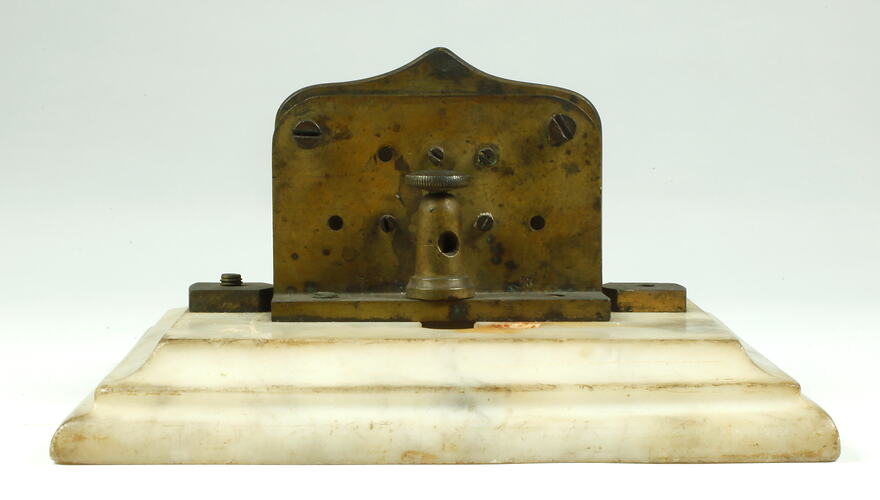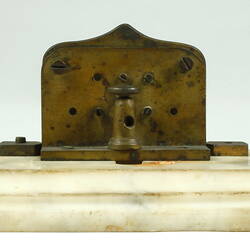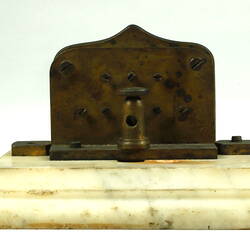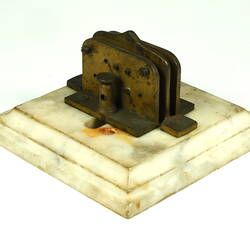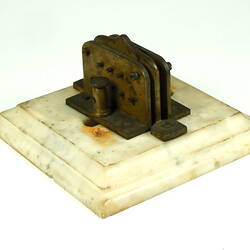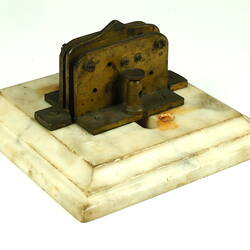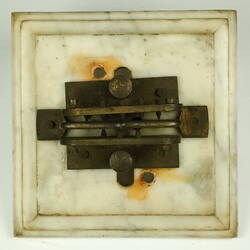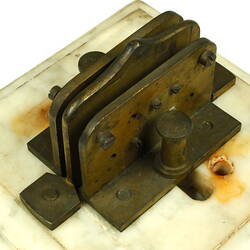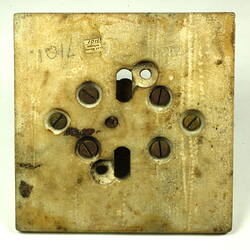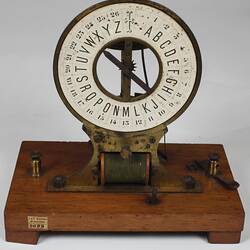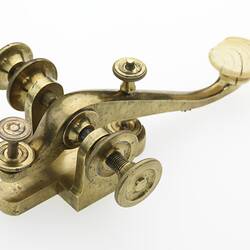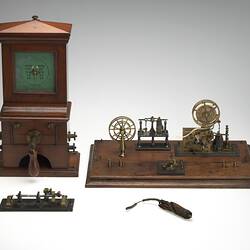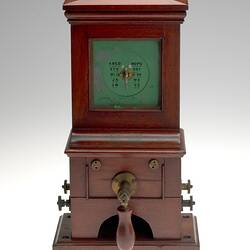Summary
Telegraph lightning arrester, used to protect telegraph equipment from damage due to lightning strikes on the telegraph line.
At a telegraph station, the lightning arrester is positioned in the wiring circuit between the telegraph line itself and the various instruments at the station, such as the relay, the sounder, the register and the telegraph key. The arrester provides an alternative path to earth across an air gap which the high lightning-induced current jumps but which blocks the normal telegraph line current.
The lightning arrester could not be guaranteed to provide absolute protection of the telegraph station instruments and recommended operational practice during severe thunderstorms was, where possible, to cut the station out of the line completely.
Physical Description
Three vertical brass plates on a marble base. The two outer plates are fitted with sets of points directed towards but not touching the centre plate. Brass fittings and terminals.
More Information
-
Collection Names
-
Collecting Areas
-
Acquisition Information
Donation from (Estate of) Mr John J. Thompson, 27 Apr 1915
-
Collector
Mr John J. Thompson, 12 Rose Street, Armadale, Greater Melbourne, Victoria, Australia, 27 Apr 1915
-
Classification
-
Category
-
Discipline
-
Type of item
-
Overall Dimensions
150 mm (Length), 150 mm (Width), 80 mm (Height)
-
References
The structure and function of the lightning arrester is described in 'Practical Telegraphy: A Guide for the Use of Officers of the Victorian Posts and Telegraphs Department' (Jenvey, 1904).
[Book] Jenvey, Henry W. 1904. Practical Telegraphy: A Guide for the Use of Officers of the Victorian Posts and Telegraphs Department., 1904
-
Keywords
